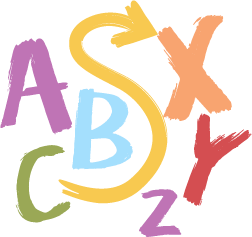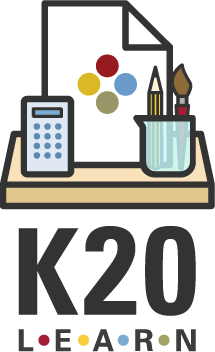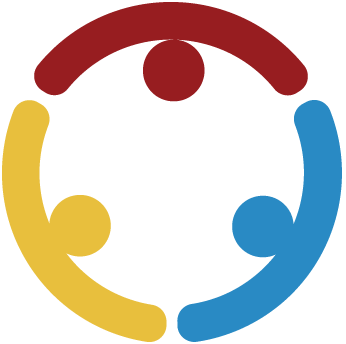Summary
If you’re looking for the perfect graphic organizer for students to organize their thoughts and ideas, this collection will lead you to it! This collection offers a variety of instructional strategies designed to help students organize their thoughts and ideas effectively. Each strategy includes editable templates suitable for a wide range of grade levels, from preschool through undergraduate. These tools aim to enhance student engagement, critical thinking, and comprehension across various subjects through the use of graphic organizers.Resources

ABC Graffiti
- Preschool - 12th
This group brainstorming strategy is designed to promote thinking about a specific topic, concept, or text. Students recall prior knowledge and make connections to new learning via other resources. Read more »
- Individual, Whole Class
- Engage/Opening, Explore/Learning Activity, Explain/Closing, Evaluate/Assessment
- 10 - 20 Minutes
- Activate Prior Knowledge, Brainstorming, Collaborate, Physical Movement, Review
- Preschool - 12th
The strategy is a dynamic group brainstorming activity that encourages students to activate prior knowledge and make connections to new learning. In this activity, students rotate through alphabet-themed posters, adding words or phrases related to a specific topic for each letter, fostering collaboration, critical thinking, and engagement across various subjects and grade levels.

Appointment Clocks
- 6th - 12th
This strategy gets students thinking, collaborating, and discussing together in a short amount of time. It also can be used to pair students in a way that can be easily referenced for future use. Read more »
- Whole Class
- Engage/Opening, Explore/Learning Activity, Explain/Closing
- 20 - 30 Minutes
- Activate Prior Knowledge, Brainstorming, Collaborate, Compare & Contrast, Conversation Starter, Elaborate, Hypothesize, Problem Solving, Summarize, Synthesize, Writing
- 6th - 12th
This strategy facilitates structured peer interactions by having students schedule "appointments" with classmates at designated times on a clock diagram. When prompted, students meet with their assigned partners to discuss specific questions or tasks, promoting collaboration, active engagement, and efficient classroom management.

Circle Maps
- Preschool - 12th
This strategy uses a graphic organizer to introduce new content or enhance a student’s understanding of an existing concept. Read more »
- Individual, Whole Class
- Engage/Opening, Explore/Learning Activity, Explain/Closing, Evaluate/Assessment
- 10 - 20 Minutes, 20 - 30 Minutes
- Activate Prior Knowledge, Brainstorming, Critical Thinking, Organize, Review
- Preschool - 12th
This strategy uses a graphic organizer to help students brainstorm and record descriptors related to a concept or key term, visually mapping their prior knowledge and new ideas. By sharing and discussing their maps, students deepen their understanding and make meaningful connections, culminating in a concise summary framed around their learning.

Cognitive Comics
- 6th - 12th
In this strategy, students create short comics to artistically express their understanding of a concept or share a related experience. Read more »
- Individual
- Extend/Additional Learning Activity, Evaluate/Assessment
- More Than 30 Minutes
- Summarize, Writing
- 6th - 12th
This strategy invites students to create comic strips in response to a prompt or reading, using artwork and dialogue to express their understanding of a concept or share personal experiences. This creative approach helps check for understanding, uncover misconceptions, and allows students to demonstrate learning in a visual and engaging way without focusing on artistic skill.

Dividing the Pie
- 6th - 12th
Students are provided with an historical event and several causes to analyze. After an analysis of the content, students determine a percentage to represent the impact of each cause. They then create a pie chart and explain their reasoning for each of the percentages in the chart. Read more »
- Individual, Small Group
- Engage/Opening, Evaluate/Assessment
- 10 - 20 Minutes
- Activate Prior Knowledge, Active Engagement, Analyze, Evaluate, Reason
- 6th - 12th
This strategy asks students to analyze the causes of an historical event by assigning percentage values to each contributing factor, visually representing their analysis with a pie chart. Students then explain and justify their reasoning for the assigned percentages, promoting critical thinking, discussion, and deeper understanding of complex events.

Double Bubble Map
- Kindergarten - Undergraduate
A double bubble map is a graphic organizer used to compare and contrast two concepts. Read more »
- Small Group
- Explore/Learning Activity
- 20 - 30 Minutes
- Compare & Contrast
- Kindergarten - Undergraduate
This strategy is a graphic organizer that helps students visually compare and contrast two concepts by mapping out their similarities and differences using interconnected circles. By collaborating with a partner to identify unique and shared characteristics, students deepen their understanding of relationships between topics and organize their ideas for further discussion or writing.

Fishbone
- 6th - 12th
This strategy guides students to consider all possible factors that contribute to an outcome. Students create Fishbone diagrams to analyze and evaluate scientific or historical events to better understand their root causes. Read more »
- Individual, Small Group, Whole Class
- Extend/Additional Learning Activity
- 10 - 20 Minutes
- Analyze, Brainstorming, Collaborate, Critical Thinking, Interpret
- 6th - 12th
This strategy guides students to analyze the root causes of a particular outcome by creating a Fishbone diagram, where the main effect is written at the "fish head" and contributing factors branch out as "bones." This visual organizer encourages critical thinking and helps students explain how each factor influenced the outcome, supporting deeper analysis in discussions, debates, or written responses.

Frayer Model
- 6th - 12th
This instructional strategy allows participants to graphically organize their prior knowledge about a concept into an operational definition. Read more »
- Individual, Whole Class
- Engage/Opening, Explore/Learning Activity, Explain/Closing, Extend/Additional Learning Activity, Evaluate/Assessment
- 20 - 30 Minutes
- Activate Prior Knowledge, Brainstorming, Collaborate, Organize, Review, Summarize
- 6th - 12th
This strategy includes a graphic organizer that helps students deepen their understanding of a concept by dividing a page into four quadrants to define the term, to list its characteristics, and to provide examples and non-examples. This strategy activates prior knowledge, encourages collaboration, and supports students in organizing and clarifying their thinking about key vocabulary or concepts.

Give, Get, Reflect
- 6th - 12th
This strategy involves students' sharing thoughts and ideas on a topic while encouraging movement. Students are given the chance to listen to the opinions of their classmates and then to reflect on the value of listening and learning from different viewpoints. Read more »
- Large Group (at least 30), Medium Group (at least 10)
- Engage/Opening, Explore/Learning Activity, Extend/Additional Learning Activity
- 10 - 20 Minutes
- Physical Movement, Speak & Listen, Student Choice
- 6th - 12th
This strategy engages students in sharing their initial thoughts on a topic, then moving around the classroom to exchange ideas with peers and record new perspectives. After these interactions, students reflect on what they learned from others and consider whether their thinking has changed, fostering active listening, open-mindedness, and deeper understanding of diverse viewpoints.

How I Know It
- Preschool - 12th
This strategy effectively introduces the concept of constructed knowledge as students consider how they've come to know things for a "fact." Read more »
- Individual, Whole Class
- Engage/Opening, Explain/Closing, Evaluate/Assessment
- Less Than 10 Minutes
- Activate Prior Knowledge, Analyze, Conversation Starter, Critical Thinking, Evaluate, Identify, Reason, Reflection, Summarize
- Preschool - 12th
This strategy prompts students to list what they already know about a topic in a central circle and then reflect on how they acquired that knowledge by identifying the sources or experiences that contributed to their understanding. This activity encourages critical thinking about the construction of knowledge, helping students analyze and evaluate the origins and reliability of their information.

An Identity Chart is a graphic organizer used to deepen understanding of a person, place, or topic. This graphic tool can help students further understand content, share their own previous knowledge, and break down stereotypes or misconceptions. Read more »
- Individual, Small Group, Small Group (at least 4), Whole Class
- Engage/Opening, Explore/Learning Activity, Evaluate/Assessment
- Less Than 10 Minutes, 10 - 20 Minutes, 20 - 30 Minutes
- Activate Prior Knowledge, Active Engagement, Brainstorming, Collaborate, Conversation Starter, Critical Thinking, Elaborate, Evaluate, Hypothesize, Identify, Infer, Organize, Reflection, Writing
This strategy uses a graphic organizer with a central topic — such as a person, group, or concept — surrounded by descriptive words and phrases that students brainstorm and research to deepen understanding. This flexible tool encourages students to activate prior knowledge, break down stereotypes, and synthesize new information, making it ideal for introducing or reflecting on content in a collaborative and engaging way.

Inside Out
- 6th - 12th
In this strategy, students assess their existing knowledge on a topic and then explore a question both in text and with a partner. Read more »
- Individual
- Engage/Opening, Explore/Learning Activity, Explain/Closing
- Activate Prior Knowledge, Brainstorming, Organize
- 6th - 12th
This strategy uses a three-circle graphic organizer to help students visually build their understanding of a topic by starting with their own prior knowledge in the innermost circle, adding new insights from a partner in the middle circle, and incorporating information from a text or media in the outermost circle. This process encourages students to activate prior knowledge, collaborate with peers, and organize new learning in a structured, engaging way.

Inverted Pyramid
- 11th - 12th
This strategy can be used to explore essential questions, concepts, texts, infographics, or videos. It also serves as a framework for classroom grouping and analysis discussions that can build student confidence and expand perspectives. Read more »
- Individual, Whole Class
- Explain/Closing
- 20 - 30 Minutes
- Analyze, Collaborate, Compare & Contrast, Critical Thinking, Physical Movement, Summarize, Synthesize, Writing
- 11th - 12th
This strategy guides students through progressively larger group discussions, starting with pairs, then moving to small groups, and finally to a whole-class conversation about a concept or text. This repeated sharing and defending of ideas helps students build confidence, refine their thinking, and broaden their perspectives by learning from others.

KWHL Graphic Organizer
- 6th - 12th
Through the use of this graphic organizer, students identify gaps in their prior knowledge on a topic then identify and engage in what they think is the best way to fill in those gaps on their own. Read more »
- Individual, Whole Class
- Engage/Opening, Explore/Learning Activity, Explain/Closing, Evaluate/Assessment
- 20 - 30 Minutes, More Than 30 Minutes
- Activate Prior Knowledge, Analyze, Brainstorming, Collaborate, Critical Thinking, Elaborate, Evaluate, Organize, Reflection, Research, Self-assessment, Summarize
- 6th - 12th
This strategy includes a four-column chart that helps students activate prior knowledge by listing what they Know, what they Want to know, How they will find the information, and what they Learned about a topic. This strategy guides students through the research process, encourages self-directed learning, and supports critical thinking and reflection throughout a lesson.

Paired Texts H-Chart
- 6th - 12th
This exercise helps students analyze and synthesize information from multiple sources. Read more »
- Whole Class
- Explore/Learning Activity, Explain/Closing
- More Than 30 Minutes
- Analyze, Critical Thinking, Interpret, Reason, Summarize, Synthesize
- 6th - 12th
This strategy guides students to analyze two different texts or concepts by recording key information from each in separate columns of an H-shaped graphic organizer. In the center, students synthesize their findings by writing a "third text" that integrates insights from both sources, promoting critical thinking, interpretation, and deeper understanding through discussion and written reflection.

Plus Delta Chart
- Preschool - Secondary
This instructional strategy is a simple way for students to engage in personal or group reflection as an approach to continuous improvement. Read more »
- Individual, Large Group (at least 30), Medium Group (at least 10), Small Group, Small Group (at least 4), Whole Class
- Explain/Closing, Extend/Additional Learning Activity, Evaluate/Assessment
- Less Than 10 Minutes, 10 - 20 Minutes
- Analyze, Collaborate, Compare & Contrast, Conversation Starter, Critical Thinking, Evaluate, Identify, Problem Solving, Reflection, Review, Self-assessment, Summarize, Synthesize
- Preschool - Secondary
This strategy is a simple reflection tool where students identify "pluses" (aspects of a lesson, project, or activity that worked well) and "deltas" (areas for improvement or change) using a two-column chart. This approach encourages continuous improvement, critical thinking, and collaborative discussion by helping students celebrate successes and brainstorm actionable steps for growth.

Roots and Routes
- 6th - Secondary
This strategy aids students in breaking down and understanding a topic by identifying the necessary conditions (roots) and steps (leaves) required to achieve a final outcome. It involves analyzing the components and actions integral to the process and guides their route to a satisfying conclusion. Read more »
- Individual, Large Group (at least 30), Medium Group (at least 10), Small Group, Small Group (at least 4), Whole Class
- Explain/Closing, Extend/Additional Learning Activity, Evaluate/Assessment
- Less Than 10 Minutes, 10 - 20 Minutes
- Active Engagement, Analyze, Critical Thinking, Reason, Summarize, Text analysis
- 6th - Secondary
This strategy helps students break down a topic by identifying the foundational conditions (roots) needed and the action steps (leaves) required to achieve a final outcome. This process is visually represented as a flower. By mapping out these elements, students develop critical thinking and analytical skills as they plan, evaluate, or summarize processes across various subjects.

Rose, Bud, and Thorn
- Preschool - 12th
This reflection strategy is used to get students thinking about what they are grateful for and what they look forward to. Or you can use it after a project to reflect on what they are proud of and what they hope to improve on. Read more »
- Engage/Opening, Evaluate/Assessment
- Less Than 10 Minutes
- Activate Prior Knowledge, Reflection, Self-assessment, Summarize
- Preschool - 12th
This strategy is a reflection tool that prompts students to identify positives (roses), challenges (thorns), and areas for growth or anticipation (buds) related to a lesson, project, or personal experience. By categorizing their thoughts in this way, students practice self-assessment, gratitude, and goal setting, while teachers gain insight into student perspectives and needs.

Situation, Task, Action, Result (STAR)
- 9th - 12th
STAR is a reflective strategy students can use for resume developing, interview skill building, and other task-related inquiry. Read more »
- Individual, Small Group, Small Group (at least 4)
- Explore/Learning Activity, Explain/Closing
- 10 - 20 Minutes
- Activate Prior Knowledge, Brainstorming, College-Going Culture, Critical Thinking, Cross-Curricular, Elaborate, Identify, Problem Solving, Reason, Recognize, Reflection, Self-assessment, Summarize, Writing
- 9th - 12th
This strategy provides students with a structured framework to reflect on and articulate their experiences by breaking them down into four key components: the situation, the task, the actions taken, and the results achieved. This approach is especially useful for resume writing and interview preparation, as it helps students clearly communicate their skills, accomplishments, and problem-solving abilities in a concise and organized manner.

SWOT (Strengths, Weaknesses, Opportunities, and Threats)
- Preschool - Secondary
SWOT (Strengths, Weaknesses, Opportunities, and Threats) analysis is a versatile assessment tool that permits strategic planning and evaluation of a project or organization. The SWOT framework can identify core strengths and weaknesses as well as the external opportunities and threats that affect performance. Read more »
- Individual, Large Group (at least 30), Medium Group (at least 10), Small Group, Small Group (at least 4), Whole Class
- Evaluate/Assessment
- More Than 30 Minutes
- Action Plans, Evaluate, Reflection, Review, Self-assessment
- Preschool - Secondary
This strategy is a self-assessment tool that helps teams or individuals analyze internal strengths and weaknesses alongside external opportunities and threats related to a project or organization. By collaboratively reflecting on these four areas, participants can make informed, strategic decisions to enhance performance, address challenges, and capitalize on growth opportunities.

Tic Tac Tell
- 6th - 12th
This strategy provides an opportunity for students to interact with vocabulary and practice writing. Given nine academic vocabulary terms related to a unit, students select terms that connect and use them to write a paragraph. Read more »
- Individual, Small Group
- Explain/Closing, Extend/Additional Learning Activity, Evaluate/Assessment
- 10 - 20 Minutes
- Reason, Self-assessment, Student Choice, Summarize, Writing
- 6th - 12th
This strategy uses a tic-tac-toe grid filled with nine academic vocabulary terms. The strategy prompts students to select three connected words (horizontally, vertically, or diagonally) and incorporate them into a paragraph. This engaging activity encourages students to make connections between concepts, practice academic writing, and demonstrate understanding of key vocabulary in context.

Tip of the Iceberg
- 11th - 12th
Students use critical thinking to identify and reflect on their own learning. Read more »
- Whole Class
- Evaluate/Assessment
- 20 - 30 Minutes, More Than 30 Minutes
- Activate Prior Knowledge, Analyze, Brainstorming, Critical Thinking, Elaborate, Evaluate, Identify, Recognize, Reflection, Self-assessment, Summarize
- 11th - 12th
This strategy uses a graphic organizer shaped like an iceberg to help students reflect on their learning by distinguishing between what they visibly know (above the water), what they suspect or infer (at the water line), and deeper knowledge or questions they have developed (below the water). This metaphorical approach encourages critical thinking, self-assessment, and deeper exploration of a topic by illustrating that much of understanding lies beneath the surface.

Triangle-Square-Circle
- Preschool - 12th
This reflective strategy requires students to reflect and choose important pieces of information and question anything they don’t completely understand. Read more »
- Individual, Whole Class
- Engage/Opening, Explain/Closing, Evaluate/Assessment
- Less Than 10 Minutes
- Analyze, Critical Thinking, Evaluate, Identify, Organize, Reflection, Self-assessment, Student Choice, Summarize
- Preschool - 12th
This strategy invites students to reflect on a lesson, text, or discussion by recording three important points in a triangle, noting what "squares" with their thinking in a square, and writing questions or uncertainties that are still "circling" in their mind in a circle. This visual and reflective approach helps students organize their thoughts, self-assess their understanding, and identify areas that may need further exploration.

Two-Voice Poems
- 6th - 12th
This cross-curricular writing activity provides opportunities for students to write on a topic using two different perspectives. Read more »
- Individual, Whole Class
- Explore/Learning Activity, Explain/Closing, Extend/Additional Learning Activity
- More Than 30 Minutes
- Analyze, Collaborate, Compare & Contrast, Critical Thinking, Elaborate, Speak & Listen, Summarize, Synthesize, Writing
- 6th - 12th
This strategy engages students in collaboratively writing poems from two different perspectives, highlighting contrasts in the verses and shared similarities in the choruses. By comparing and contrasting people, concepts, or readings, students develop critical thinking, collaboration, and communication skills while creatively synthesizing their understanding.

Unboxing Video
- 1st - 12th
Students create a YouTube-style unboxing video to demonstrate their learning. Read more »
- Individual, Small Group
- Explain/Closing, Extend/Additional Learning Activity, Evaluate/Assessment
- More Than 30 Minutes
- Evaluate, Review, Summarize, Synthesize
- 1st - 12th
This strategy has students synthesize and summarize their understanding of a topic by selecting or creating items that represent key concepts, then filming a YouTube-style unboxing video where they explain the significance of each item as they reveal it. This creative approach encourages deeper engagement, visual thinking, and clear communication while allowing students to demonstrate their learning in an interactive and memorable way.

Venn Diagram
- 3rd - Undergraduate
A Venn diagram is an illustration that uses circles to show the relationships among things or finite groups of things. Read more »
- Individual, Large Group (at least 30), Medium Group (at least 10), Small Group, Small Group (at least 4), Whole Class
- Engage/Opening, Explore/Learning Activity, Explain/Closing, Extend/Additional Learning Activity, Evaluate/Assessment
- 10 - 20 Minutes, 20 - 30 Minutes
- Activate Prior Knowledge, Analyze, Compare & Contrast, Critical Thinking, Elaborate, Evaluate, Organize, Summarize, Synthesize
- 3rd - Undergraduate
This strategy uses overlapping circles to help students visually organize and compare similarities and differences between two or more items or concepts. By mapping unique and shared characteristics in the appropriate sections, students develop critical thinking skills and deepen their understanding through analysis and synthesis of information.
This work is licensed under a Creative Commons CC BY-SA 4.0 License.
Report copyright infringement »

